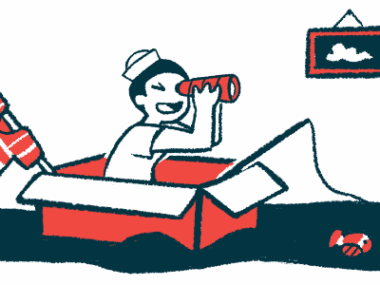What does it mean to be a part of a community?
A columnist discovers he's on the right track
Written by |

When my wife, Judy, and I discovered that our daughter, Rylae-Ann, has a rare, neurotransmitter disease known as aromatic l-amino acid decarboxylase (AADC) deficiency, we automatically became part of a very small group of parents from around the world.
The life-threatening symptoms of AADC deficiency terrified us. It didn’t ease those concerns when we learned that our options for seeking support were limited because there were so few members in our community.
After five years on this rare disease journey, that number still gave me pause. When Judy and I hosted parent workshops or meet-up events, the low number of people who attended made me wonder whether our community could be more successful than it was. But a recent speech I heard changed my idea of what a community is.
A new perspective
During an educational leadership conference in Asia, keynote speaker Charles Vogl opened the event one day. His speech caused me to rethink my perspective about what a community is.
Vogl is an adviser to many of the top leaders in technology, finance, media, government, and social change organizations. He works with groups to form communities that can create change and accomplish the groups’ goals. He’s published three books on the topic and is quite successful at what he does.
The objective of his speech was to prompt education leaders like Judy and me to connect with stakeholders in schools to create communities. But to do that, we must first reconsider what a community is. Vogl defines it as the sharing of a mutual concern for each other’s welfare.
A community isn’t formed by actions like creating flyers for an event or sending announcements to an email group. Rather, it comes from the time-honored tradition of making meaningful connections, one by one.
Communities also don’t happen by accident. They require work and emotional investment. By hosting events, listening to each person’s story, celebrating their successes, and supporting them during their struggles, Judy and I were building a community, we just didn’t realize it.

Rylae-Ann Poulin (seated on the horse in a pink shirt) and her family pose for a photo while horseback riding on the beach. The shirts they are wearing promote their small but authentic AADC deficiency community. (Courtesy of Richard E. Poulin III)
A true community
Seeing our community as a model that other prominent organizations are working to create gave me hope. What’s important isn’t the numbers; it’s the authentic and deep ties we have with each other. In some ways, having a small community pushes us to create stronger ties with each other. That allows us to achieve big goals that would otherwise be impossible if we continued to operate in isolation.
At the same time, we need to recognize that a community’s bond isn’t eternal. Relationships and a community’s culture must be purposefully cultivated.
All of this has made me appreciate our unique community even more. This AADC deficiency community allows us to accomplish so much more than we could alone, and we get to create beautiful memories along the way.
Note: AADC News is strictly a news and information website about the disease. It does not provide medical advice, diagnosis, or treatment. This content is not intended to be a substitute for professional medical advice, diagnosis, or treatment. Always seek the advice of your physician or other qualified health provider with any questions you may have regarding a medical condition. Never disregard professional medical advice or delay in seeking it because of something you have read on this website. The opinions expressed in this column are not those of AADC News or its parent company, Bionews, and are intended to spark discussion about issues pertaining to aromatic l-amino acid decarboxylase deficiency.







Leave a comment
Fill in the required fields to post. Your email address will not be published.